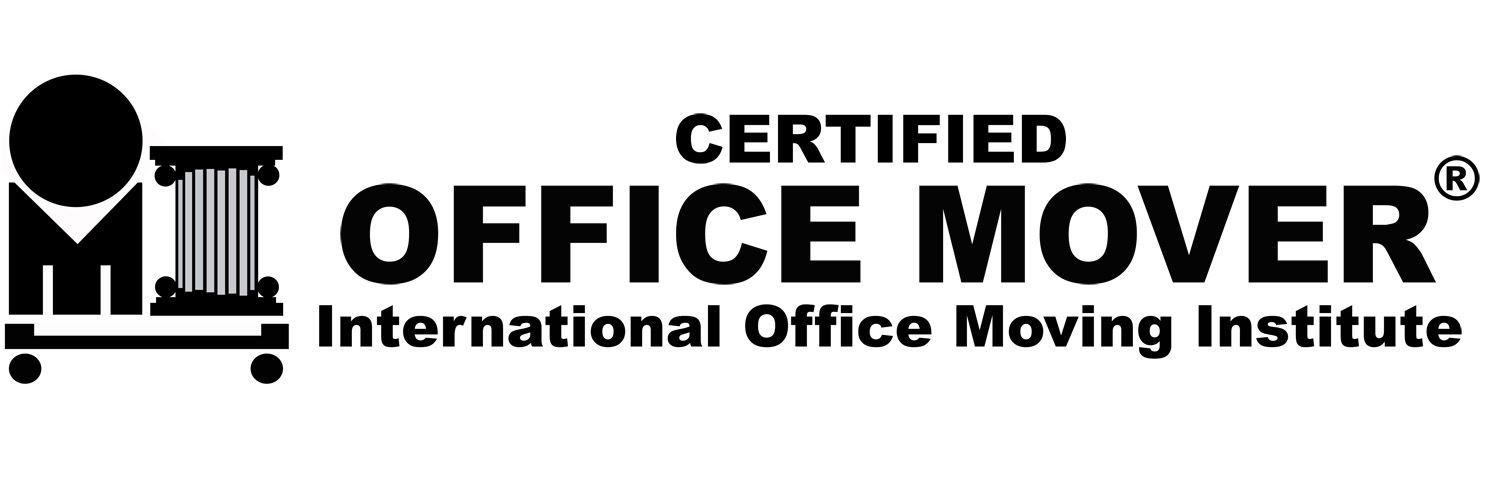How to Create a Moving Timeline That Prevents Last-Minute Stress
Moving can be one of life's most exciting, yet simultaneously daunting, events. The sheer volume of tasks, from packing and cleaning to coordinating logistics and changing addresses, can quickly lead to overwhelm and last-minute panic. A well-structured moving timeline is your ultimate tool for transforming a chaotic experience into an organized, manageable project. It breaks down the monumental task of relocating into bite-sized actions, spread out over several weeks, ensuring nothing is overlooked. By planning ahead, you can avoid the frantic rush, unexpected expenses, and emotional toll that often accompany a poorly managed move.
Why is a moving timeline essential for a stress-free move?
A moving timeline is essential because it transforms a complex, multi-faceted process into a series of manageable, sequential steps, thereby significantly reducing stress and preventing last-minute panic. Without a clear plan, it's easy to forget crucial details, run out of time, or incur unexpected costs.
By outlining every task from decluttering to utility transfers, a timeline provides a roadmap that keeps you on track. It allows for proper budgeting, gives ample time to research and book reliable moving service, and ensures you have all necessary supplies. The peace of mind that comes from knowing you're prepared is invaluable during a major life transition.
What's the ideal timeframe to start planning your move?
Ideally, you should start planning your move at least 8 weeks out, although a 12-week timeline is even better, especially for long-distance relocations or larger households. The amount of time needed can vary significantly based on the complexity of your move.
For instance, a local move from a small apartment might be manageable with an 8-week lead time. However, if you're relocating across state lines, moving a large family home, or have unique items requiring special handling (like pianos or extensive art collections), giving yourself 3-4 months can make a world of difference. This extended period allows for thorough decluttering, multiple quotes from reputable movers. Meticulous coordination of all logistics, from school transfers to new job arrangements.
What should your moving timeline include at the 8-week mark?
At the 8-week mark, your moving timeline should focus on foundational logistics, initial decluttering, and researching potential service providers. This is the stage for big-picture planning and setting the groundwork for a smooth transition and Eco-friendly moving is not just about reducing waste but about redefining the entire moving experience.
Here are the key tasks to tackle:
- Create a Moving Binder or Digital Folder: Centralize all your moving-related documents, contracts, receipts, and contact information. This will be your go-to resource throughout the entire process.
- Set a Realistic Moving Budget: Estimate costs for packing supplies, moving services, temporary housing, travel, and potential new furniture or repairs. Labor-only moving services are the unsung heroes of many relocations, offering a flexible, efficient, and often more affordable solution. Understanding your financial parameters early prevents surprises later on.
- Start Decluttering and Downsizing: Go through every room, closet, and drawer. Decide what you want to keep, donate, sell, or discard. Being ruthless now means less to pack, move, and unpack later. Consider a garage sale, consignment, or donating to local charities.
- Measure New Home Doorways and Spaces: If you have access to your new home, measure doorways, stairwells, and room dimensions to ensure your large furniture will fit comfortably. This prevents the headache of moving items that won't make it inside.
- Create a Master Inventory List: Begin compiling a list of your belongings, especially high-value items. This aids in tracking and provides a record for insurance purposes.
What tasks are crucial 6 weeks before moving day?
Six weeks before moving day, crucial tasks involve solidifying your moving company choice, ordering necessary packing supplies, and initiating the process for utility transfers and address changes. This period is about firming up commitments and getting practical preparations underway.
Here’s a breakdown of what to prioritize:
- Book Your Moving Company: Once you’ve compared quotes, it’s time to secure your dates with your chosen mover. Confirm all details, including services, pricing, and insurance.
- Order Packing Supplies: Based on your decluttering efforts, order a variety of boxes (small, medium, large, wardrobe), packing tape, bubble wrap, packing paper, markers, and any specialized containers.Falcon Moving LLC Offer packing and moving services include professional wrapping, cushioning, and secure boxing for everything from household goods to delicate valuables. Having these on hand early eliminates last-minute dashes to the store.
- Start Packing Non-Essential Items: Begin with items you don't use daily. This includes seasonal decorations, books, rarely used kitchen gadgets, formal wear, and out-of-season clothing. Label each box clearly with its contents and the room it belongs in at your new home.
- Arrange for Utility Disconnects and Reconnects: Contact your current utility providers (electricity, water, gas, internet, cable, trash) to schedule disconnection for your move-out date. Simultaneously, arrange for services to be connected at your new address before you arrive.
- Change Your Address with the Post Office: Submit a change of address form with the USPS. This will ensure your mail is forwarded to your new residence.
What should you accomplish 4 weeks out from your move?
Four weeks before your move, your focus should intensify on packing, notifying important contacts, and making specific arrangements for valuable or unique items. This is when the bulk of your packing efforts should begin.
Key actions for this stage include:
- Continue Packing Systematically: Work room by room, focusing on items you use less frequently. Remember to label boxes clearly on multiple sides with their contents, the room they belong to, and "fragile" if applicable. Consider numbering boxes and keeping a master list.
- Confirm Arrangements: Reconfirm your moving date, time, services requested, and any special instructions or access details for both locations. Ensure you have their contact information readily available.
- Notify Important Institutions of Your Address Change: Contact your bank, credit card companies, insurance providers (auto, home, health), doctors, dentists, schools, employers, and subscription services. Update your address for magazines, clubs, and online shopping accounts.
- Arrange for Transfer of Medical Records and Prescriptions: If you're changing doctors or pharmacies, ensure your medical records are transferred to your new providers and that you have enough prescription medication to last through the move.
What are the key steps in the final 2 weeks before moving?
In the final two weeks before your move, the tasks become more immediate, focusing on packing essentials, confirming last-minute details, and ensuring your old home is ready for departure. This is a critical period for wrapping up loose ends.
Here’s what to prioritize:
- Pack an "Essentials" Box/Bag: This is crucial. Pack a box with items you'll need immediately upon arrival at your new home before everything else is unpacked. Include toiletries, medications, a change of clothes, basic tools, snacks, important documents (IDs, moving contract), chargers, pet supplies, and anything else you can't live without for a day or two.
- Confirm Arrival Times and Logistics: Touch base with your moving coordinator to re-verify the exact arrival time of the moving crew, discuss parking arrangements for the truck, and confirm payment methods and final costs.
What should you do on moving day?
On moving day, your primary roles are to supervise the movers, perform a final walkthrough of your old residence, and ensure all essential items remain with you. Here’s a checklist for the big day:
- Do a Final Walkthrough of the Old Home: Before the movers leave, do a thorough walk-through of every room, closet, and cabinet to ensure nothing has been left behind. Check for any damage.
- Keep Important Documents and Valuables with You: Do not put your "essentials" box, important financial documents, passports, jewelry, or high-value electronics on the moving truck. Transport these yourself for security.
- Ensure Utilities are Off (or Transferred): Double-check that all utilities are properly disconnected at your old home as planned.
What are common mistakes to avoid when creating a moving timeline?
When creating a moving timeline, several common pitfalls can derail your efforts and bring back the stress you're trying to avoid. Being aware of these can help you bypass them.
Here are the mistakes to avoid:
- Underestimating the Time Needed: Many people underestimate how long each task takes, especially packing and decluttering. Give yourself generous buffer time for each step. A common mistake is thinking a 2-bedroom apartment can be packed in a weekend – it rarely can be effective.
- Not Decluttering Enough: Failing to declutter ruthlessly leads to moving items you don't need or want, increasing packing time, moving costs, and unpacking effort. Be honest with yourself about what truly needs to come with you.
- Ignoring a Realistic Moving Schedule: Trying to pack and move everything in one intense sprint is a recipe for burnout and mistakes. A phased approach, as outlined in this timeline, is always more effective.
- Not Labeling Boxes Clearly: This seems minor but causes major headaches during unpacking. Vague labels like "kitchen stuff" are unhelpful. Be specific: "Kitchen - pots & pans," "Bedroom 2 - Linens."
Forgetting to Pack an Essentials Box: Arriving at a new home without immediate access to basic necessities is incredibly frustrating. This box is your lifeline for the first 24-48 hours.
Key Takeaways
- Start Early: Begin planning at least 8-12 weeks before your move to minimize stress.
- Budget & Declutter First: These initial steps are crucial for a smooth and cost-effective relocation.
- Book Movers in Advance: Secure your spot with reputable movers like Falcon Moving LLC to guarantee availability.
- Pack Systematically: Work room by room, labeling boxes clearly, and don't forget an "essentials" box for moving day.
- Confirm All Details: Regularly reconfirm arrangements with movers and utility providers.
- Stay Flexible: While a timeline is a guide, be prepared for minor adjustments.
- Avoid Common Pitfalls: Don't underestimate time, neglect decluttering, or fail to budget properly.
Creating a moving timeline is not just about organizing tasks; it's about empowering yourself to approach one of life’s most significant transitions with confidence and control. By following a structured plan, you can systematically tackle each phase of your move, preventing the last-minute stress and overwhelming feeling that so often accompanies relocation. And when it comes to professional, reliable assistance to execute your plan, Falcon Moving LLC, Your Illinois, Movers is here to ensure your moving day is as seamless and stress-free as your meticulously planned timeline dictates.




